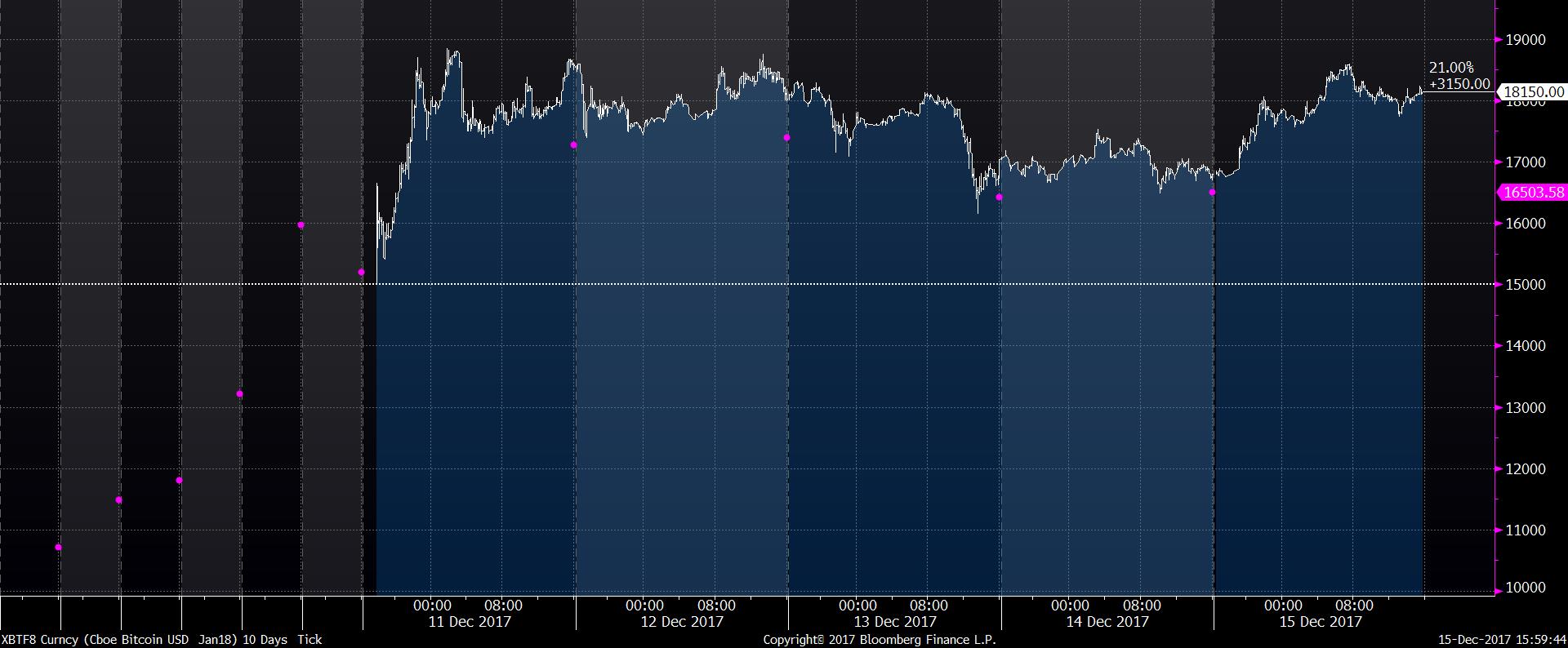The Futures of Bitcoin
There’s a lot of talk about bitcoin futures markets these days. And for good reason. The Chicago Board Options Exchange (CBOE) launched its futures contract on December 10. The Chicago Mercantile Exchange (CME) is set to release another on December 18. Some claim futures will bolster demand for bitcoin. Others see it as little more than gambling. What are these bitcoin futures all about?
Let’s start with the basics. A futures contract stipulates that the buyer will pay a given price, agreed upon today, when the seller delivers the contracted quantity of an asset at a predetermined date in the future. We might agree, for example, that you will purchase one bitcoin from me at a price of $17,000 one year from today. Suppose that, a year from today, one bitcoin is trading at $17,010 on the spot market. The futures contract means I would have to purchase one bitcoin at $17,010 (or, use my current holding of bitcoin) and sell it to you for $17,000. That’s a $10 loss for me. On the other hand, suppose the spot price of bitcoin one year from now is only $16,090. The futures contract means I you would have to purchase one bitcoin from me at $17,000, even though the same bitcoin is available on the market for $16,090. That’s a $10 gain for me. Hence, the difference between the futures price of bitcoin that we agreed to today and the spot price of bitcoin one year from now represents my gain (your loss).
The futures contracts offered on CBOE and CME differ slightly from the hypothetical outlined above. For one, both are settled in US dollars, not bitcoin. If the spot price exceeds the agreed-to futures price at maturity, the seller pays the buyer the difference in dollars. If the agreed-to futures price exceeds the spot price at maturity, the buyer pays the seller the difference in dollars.
CBOE contracts recognize the 4PM auction price on the Gemini exchange as the spot price of bitcoin. CME contracts will rely on the Bitcoin Reference Rate (BRR), an index of bitcoin prices across four exchanges (itBit, Kraken, BitStamp, and GDAX) at 4 PM GMT on the day in question. The two markets also differ in terms of price limits, margin rates, and tick sizes.
For bitcoin enthusiasts, futures contracts trading on well-respected, regulated exchanges help to legitimize bitcoin. They also enable one to trade the risk, or volatility, of holding bitcoin. As such, the emerging futures markets bode well for bitcoin.












